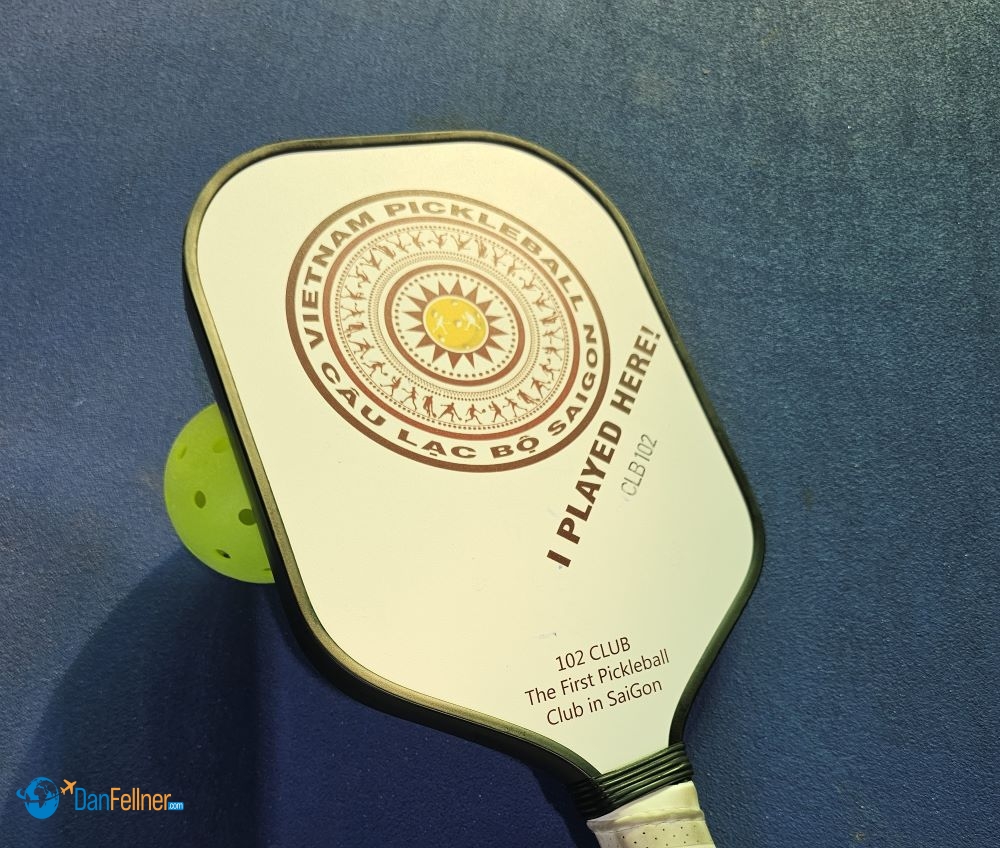American sport emerging as a big hit in Ho Chi Minh City
January 31, 2024
HO CHI MINH CITY, Vietnam – “Chín đến tám.”
I had no idea what my partner Nguyen was saying, only that he was calling out the score and we were in the latter stages of a back-and-forth game of pickleball in the heart of this crowded, chaotic and sweltering city of more than nine million people.
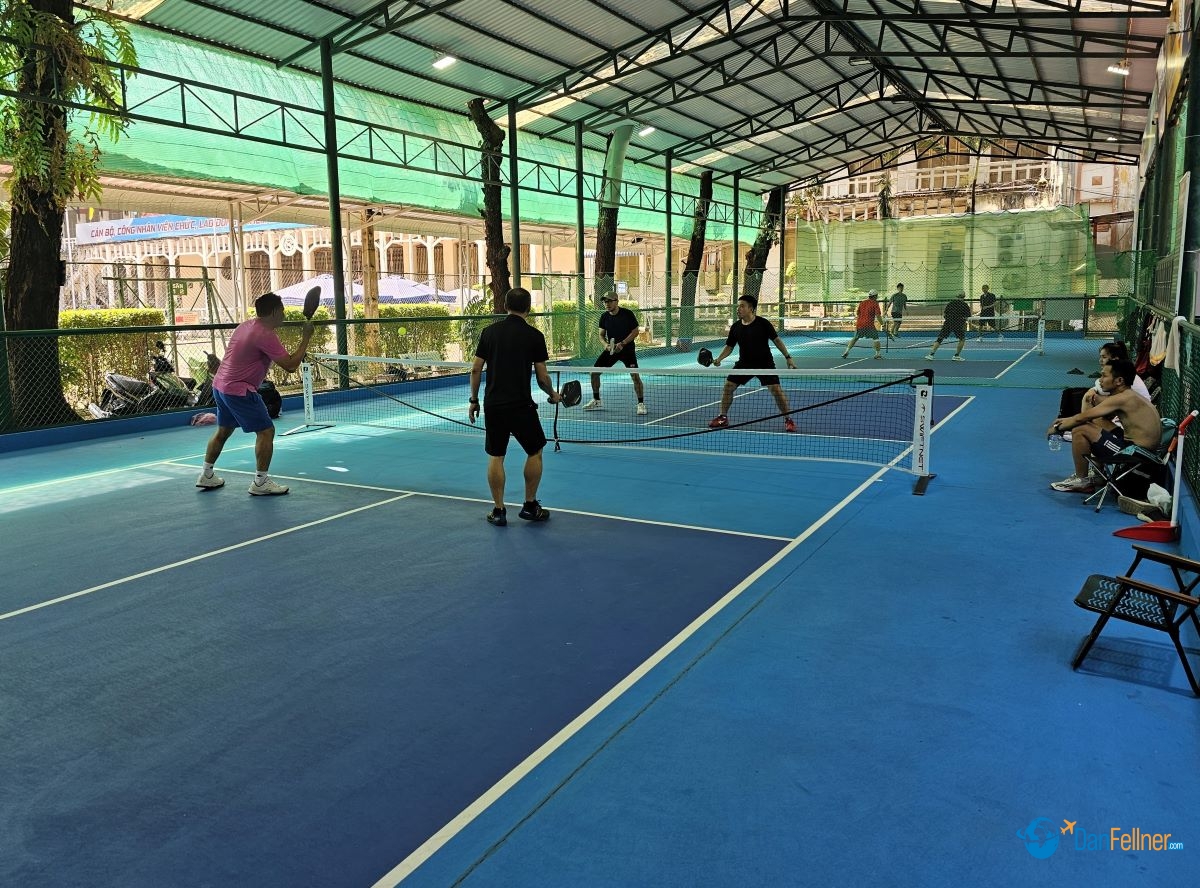
There are two courts at Câu lạc bộ (Club) Pickleball in downtown Ho Chi Minh City, with plans to add four more courts.
Turns out, Nguyen and I were ahead 9-8 and on our way to a close win at the new two-court Câu lạc bộ (Club) Pickleball. The facility is just two blocks from the city’s landmark Independence Palace, the site of the fall of Ho Chi Minh City – then officially called Saigon — that ended the Vietnam War nearly a half-century ago.
In just over three years since pickleball was first introduced in this Southeast Asian country, the sport has become nearly as hot as chỉ thiên, the notoriously spicy red-chili peppers served with many Vietnamese dishes.
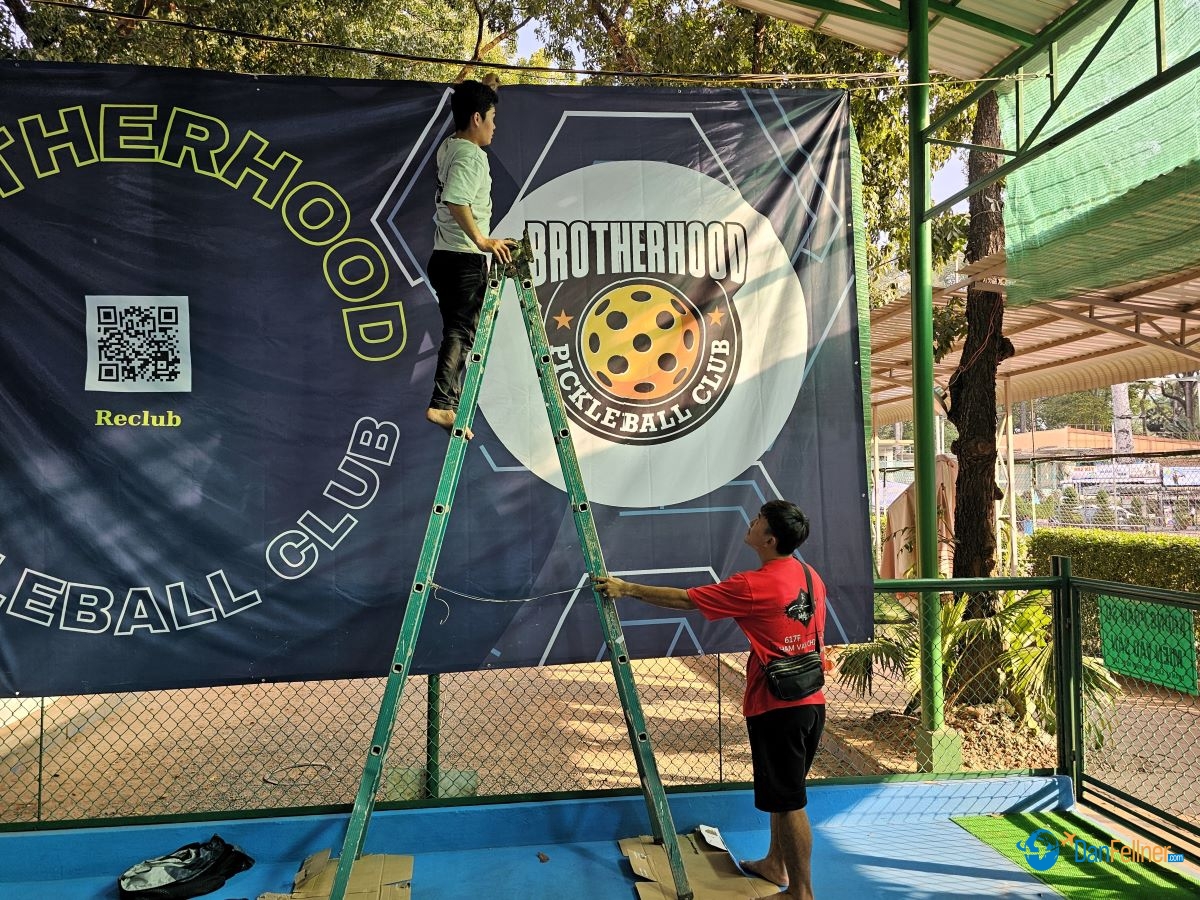
Workers hang a banner promoting one of Ho Chi Minh City’s numerous pickleball clubs.
During a four-week visit to the city, I was surprised to learn there are several dozen pickleball courts in the city, with more being continually added. A “Pickleball Saigon” Facebook page, which promotes venues, tournaments and pickleball social events, has 2,900 members.
Vietnamese players have already started making a name for themselves in international tournaments. Two won silver medals at the Asia Pickleball Games 2023 in Taiwan. And Truong Quang Vu, a former national tennis coach, won gold in the men’s 35+ singles at the 2023 World Pickleball Championship in Bali.
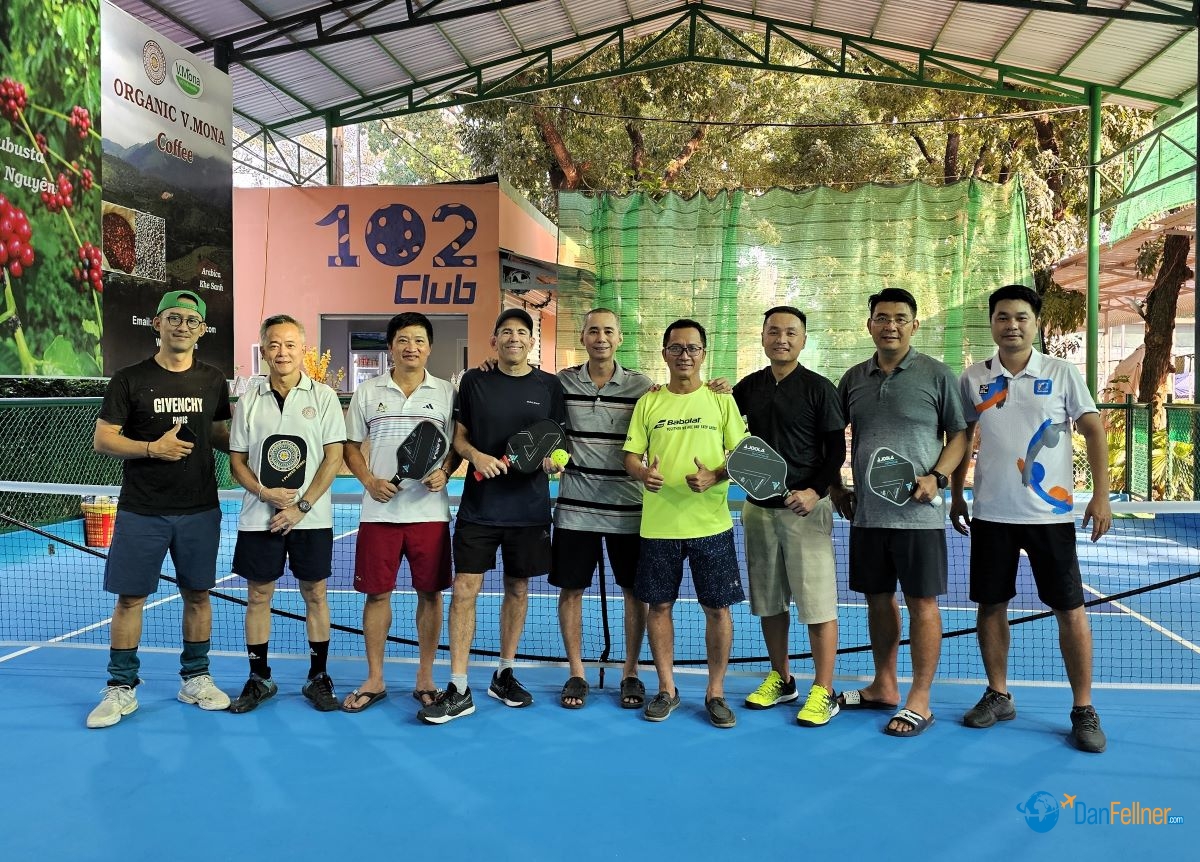
The author (fourth from left) poses with a group of players at Câu lạc bộ Pickleball in Ho Chi Minh City. Vincent Nyugen (second from left) manages the facility.
While it’s not uncommon to see American visitors and other foreigners use the city’s courts, a vast majority of players are Vietnamese. I played seven times at Câu lạc bộ Pickleball and found the level of play to be much higher than I expected in a country where the sport is so nascent.
Many Vietnamese have experience with other racket/paddle sports – namely tennis, badminton and table tennis – which likely explains their affinity for the sport.
“This sport is very suitable to Vietnamese people because they are fast and they are quick learners,” says Vincent Nguyen, who manages the courts at Câu lạc bộ Pickleball. “They learn the sport in no time.”
The sport began to take root in Vietnam in 2021, when Jason Guillory, a 39-year-old electrician who lives in San Francisco, moved to the city for two years due to his wife Meghan’s job.
“We were amazed by the beauty and the culture of this country, but we also realized that no one here had ever heard of pickleball,” he says. “We wanted to change that.”

American Jason Guillory (left), seen at the USC Pickleball Club in Ho Chi Minh City, played a pivotal role in bringing the sport to Vietnam. (Photo courtesy of Jason Guillory).
The Guillorys brought pickleball equipment from the States to Ho Chi Minh City and set-up two makeshift courts.
“We were originally just looking for people to play with,” he says. “Soon after, it became more of a mission to bring the best sport in the world to Vietnam.”
Guillory says he worked with tennis coaches and foreigners to grow the sport. Initially, though, it was slow-going.
“It took a lot of convincing to get anyone to try something so new and different,” he says. “This was a long, slow and at times, hopeless process. Like we all know, once you try pickleball in the right environment, you’ll be hooked. I focused on exposure and used social media to facilitate that approach.”
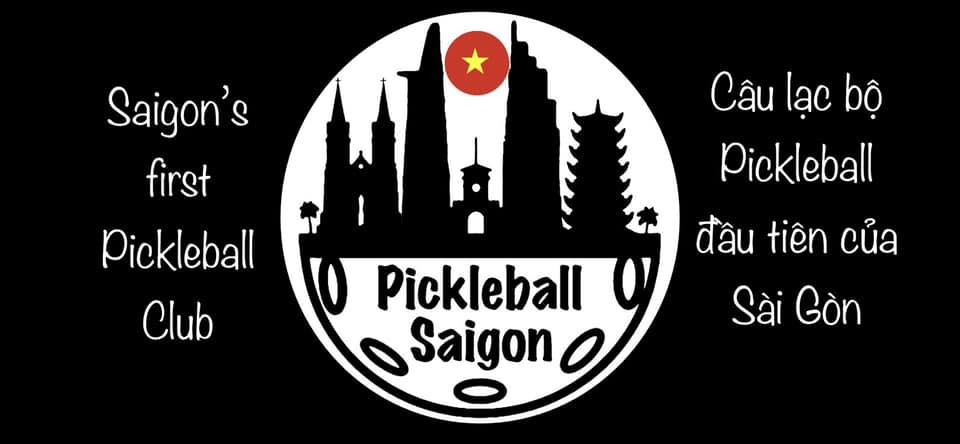
The Pickleball Saigon Facebook page, created by American Jason Guillory, currently has 2,900 members.
Word began to spread and before long, Guillory staged the country’s first pickleball tournament at a friend’s hotel now called the Saigon Park Resort.
“This tournament was an integral part of the overall catalyst which has driven the popularity of the sport in Vietnam today,” he says.
The two courts at Câu lạc bộ Pickleball are part of a government-owned complex that also includes tennis courts, volleyball, soccer and bocce ball. The pickleball courts are open-air but covered by a sheet-metal roof to keep them playable during the rainy season, which typically runs May through November. Even though it was technically winter during my January visit, the weather was hot and humid – temperatures reached the mid-90s most days.
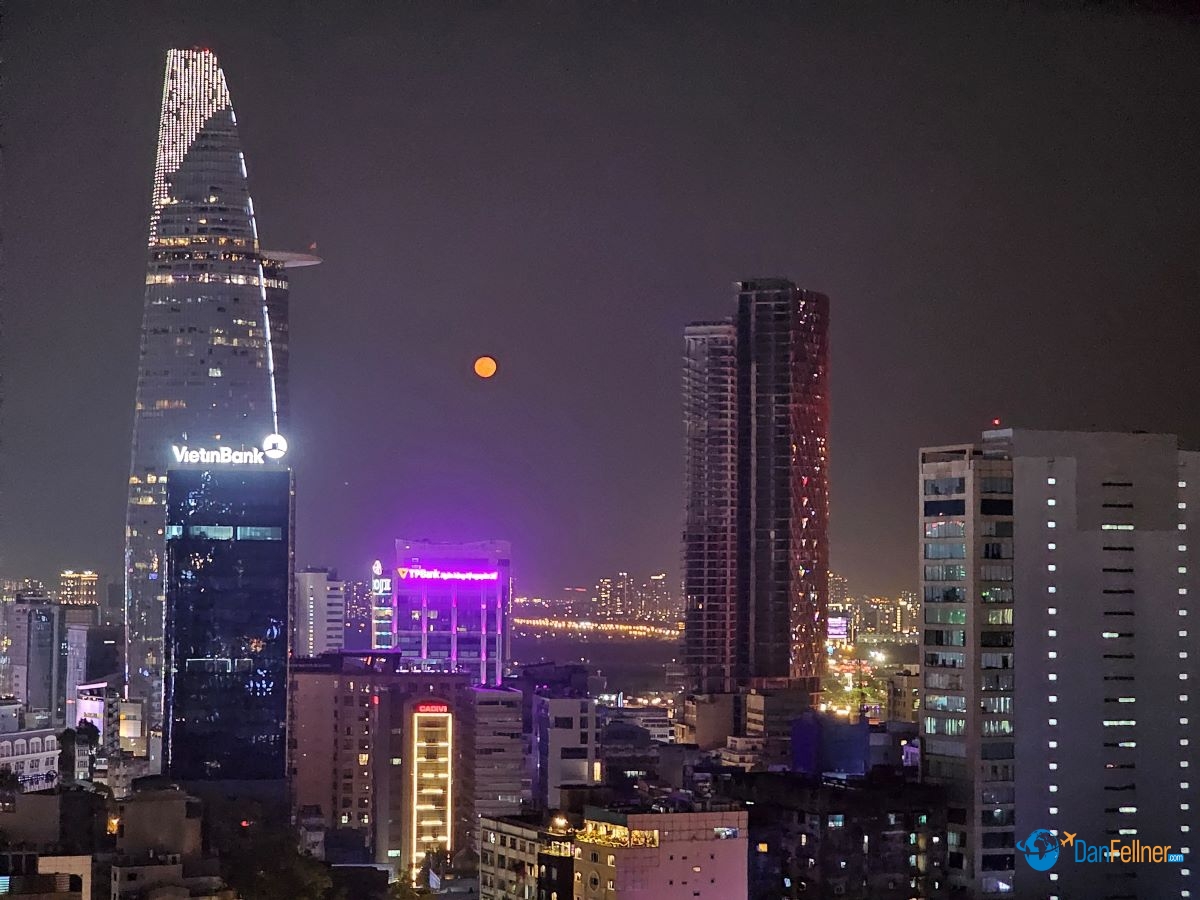
A full moon shines over the skyline of Ho Chi Minh City. Still commonly known as Saigon, the city is home to about nine million people.
Nguyen estimates that about 300 players have used the facility since it first opened last April. He says the demand for court time has been so robust, he’s in the process of converting a tennis court to four additional pickleball courts.
“First, the people here love American products,” he says of pickleball’s rapid growth. “And second, it keeps people healthy and gives them something that they can enjoy as a group. I see families come here – the father, mom and children play together.”
I wasn’t aware pickleball even existed in Vietnam until I popped into a local sporting goods store and saw a whole section devoted to pickleball equipment. An internet search showed several places to play. I chose Câu lạc bộ Pickleball because it was only a five-minute motorbike ride from my apartment near the city’s famous Ben Thanh Market.
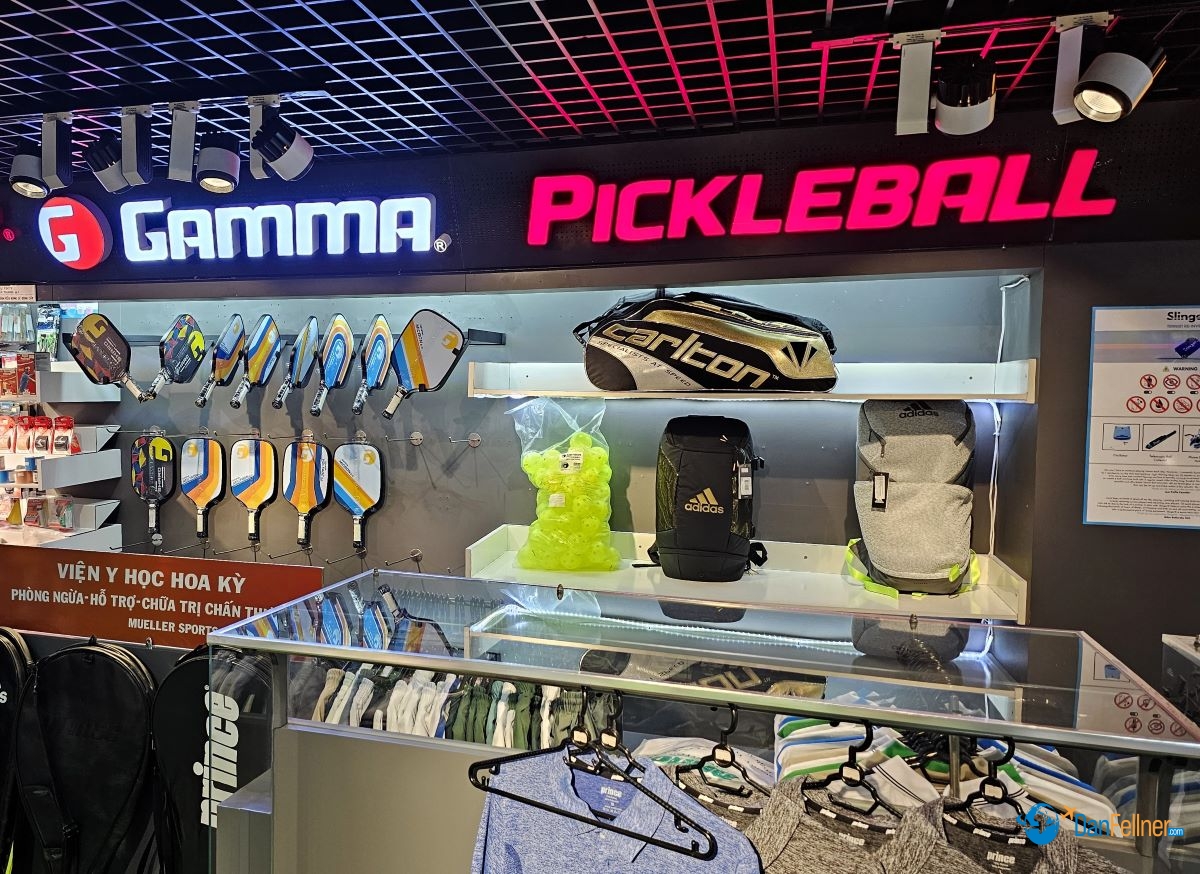
Pickleball gear for sale at a Ho Chi Minh City sporting goods store.
When I got to the club, I was introduced to Nguyen, who was in the process of giving a lesson to a group of Vietnamese teenagers. (He gives lessons for free as a “community service.”) When I mentioned I worked as a pickleball instructor back in the States, he asked me to help out. Even though most of the students spoke little English, it was great fun showing them the basics and seeing their faces light up when they hit a good shot.
For visitors, the cost to play at Câu lạc bộ Pickleball is far less expensive than back home. Two hours of court time costs 100,000 Vietnamese dong (about $4). That includes the use of balls and the rental fee for a paddle (I left my paddle back in the States as I never imagined I would need it in Vietnam). I downloaded a free app on my phone called “Reclub” and was immediately invited to join two different groups. Signing up for court time with players at or close to my 4.0 skill level was seamless.
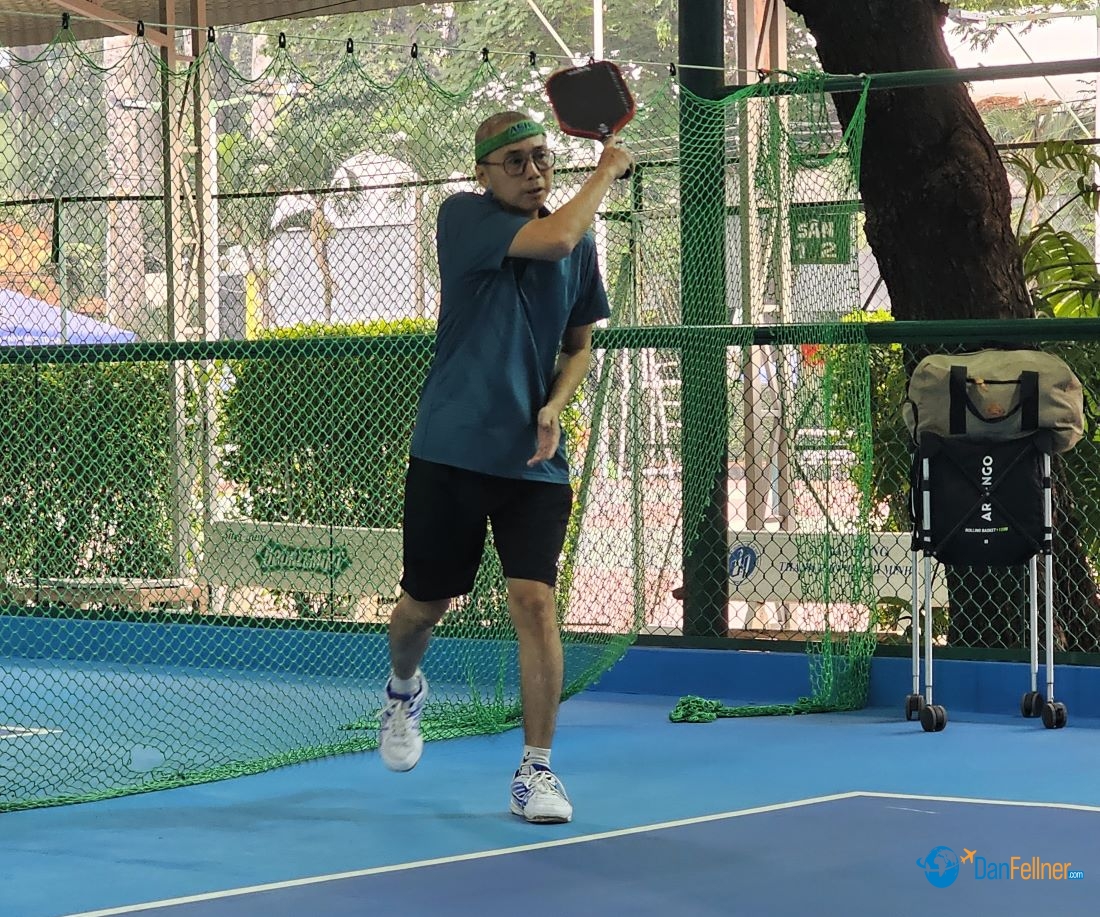
Lap Vo, founder of Lap Team Pickleball, learned the sport from watching YouTube videos. After just nine months, he already plays at a 4.0 level.
I played three times a week in a group organized by Lap Vo, who owns an information technology company in Ho Chi Minh City. Lap, 49, told me that he learned the game from watching YouTube videos. After just nine months of playing, he’s already a 4.0 player. Like many Vietnamese, his background in tennis, table tennis and badminton made the transition to pickleball relatively easy.
As for Guillory, he and his family have returned to California. But he still remains close to the Ho Chi Minh City pickleball community, by connecting travelers with pickleball players and coaches in Vietnam. He also continues to manage the Pickleball Saigon Facebook page.
“Although I still try to support pickleball growth in Vietnam, my original goal and intent was to create an autonomous system of growth fueled and managed by local Vietnamese,” he says. ““From when I arrived in 2021, pickleball didn’t exist in Vietnam. And now pickleball has exploded without any sign of slowing down.”
© 2024 Dan Fellner

